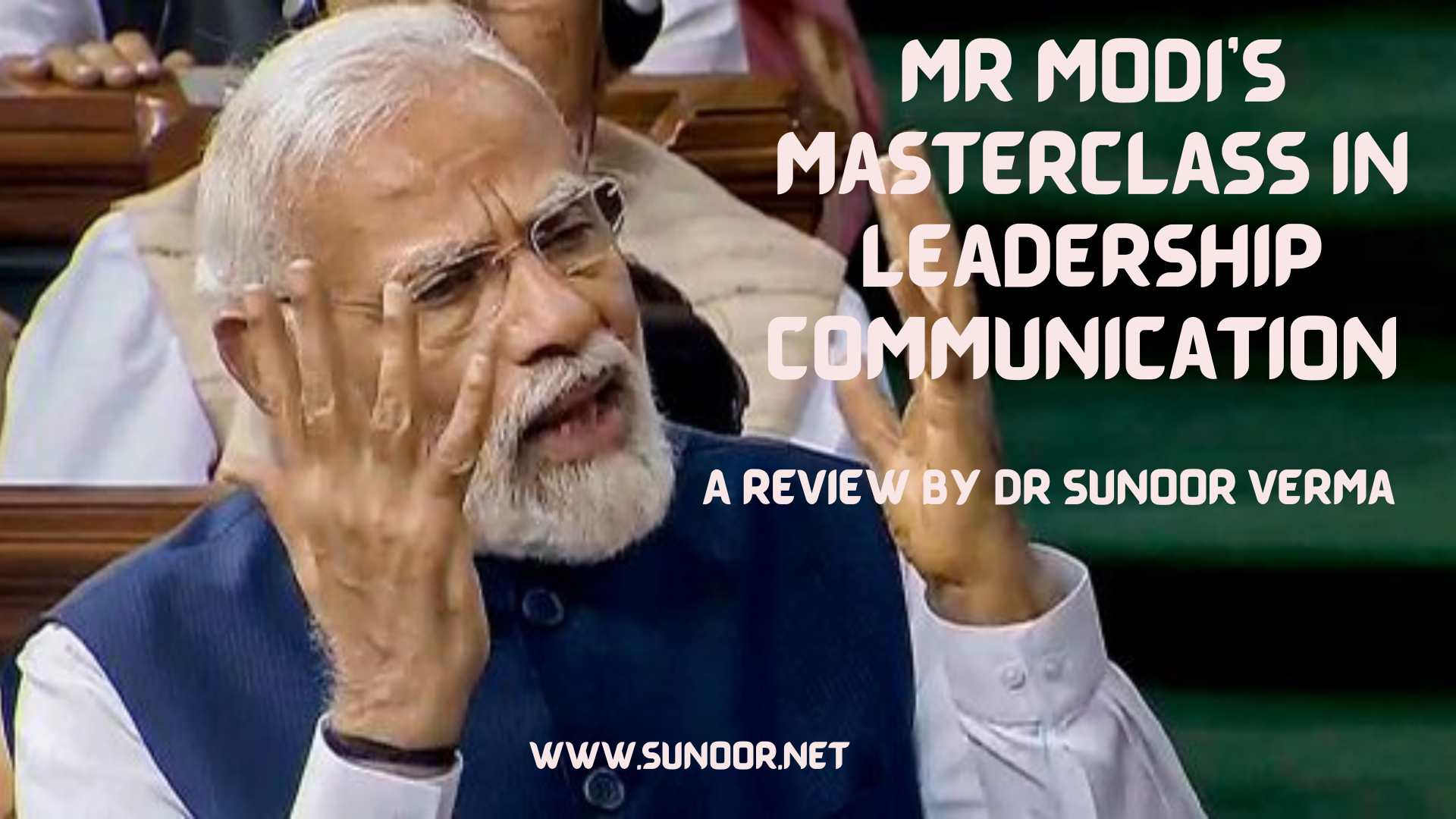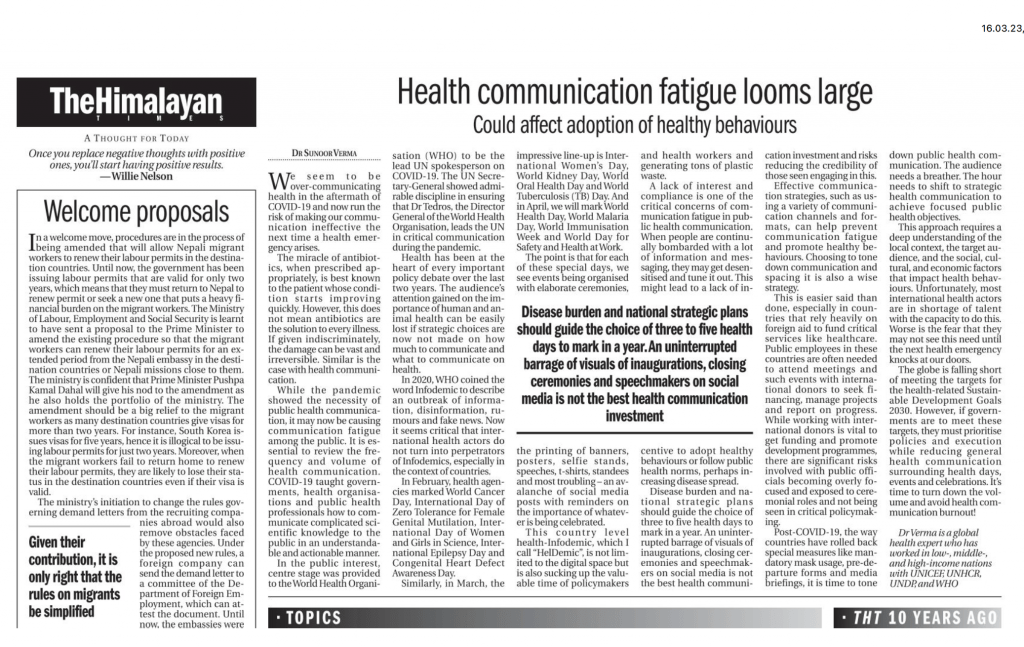Leadership communication skills are essential for any leader who wants to be successful. They involve the ability to speak clearly and concisely, to connect with an
audience, and to persuade them to your point of view. By analyzing speeches broadcast on audio-visual mediums, we can gain insights into how leaders communicate and use their communication skills to persuade and connect with others. This can be helpful for anyone who wants to improve their #leadershipcommunication skills.
India’s Prime Minister, Mr Narendra Modi, delivered a master class in political #LeadershipCommunication in parliament on August 10, 2023, when a no-confidence resolution was presented against his administration. Mr Modi accused the opposition of having no faith in India, believing those who mocked the country, and being arrogant and incompetent. He also stated that the more they tried to stop him, the more successful he became.
Here is my analysis of Mr Modi’s masterclass.
A combo of leadership & strategic communication
Mr Modi’s speech was effective in several ways. First, Timing: First and foremost, it was well-timed. The no-confidence resolution was introduced two days after Mr Modi’s party, the BJP won the municipal by-elections in Gujarat. This allowed Mr Modi to capitalize on the BJP’s momentum and depict the opposition as out of touch with the country’s spirit. As a result, this speech can also be classified under #StrategicCommunication.
Second, Arguments: Mr Modi’s speech was well-thought-out. He emphasized the government’s accomplishments in the economy, infrastructure, and social welfare sectors. He also accused the opposition of being to blame for many of the country’s problems, such as corruption and communalism.
Third, Delivery: Mr Modi addressed his remarks with passion and conviction. He addressed the people personally and stated unequivocally that he would not back down from the opposition’s challenges. This added urgency and enthusiasm to his address, which helped energize his followers.
How He Used Rhetorical Devices to Connect with the Audience
Mr Modi utilized a variety of rhetorical tactics in his speech. Here are some concrete examples:
- Ethos: Mr Modi appealed to the audience’s patriotism by discussing India’s accomplishments and accusing the opposition of being unpatriotic.
- Pathos: Mr Modi played on the audience’s emotions by speaking about the difficulties that regular people endure and blaming the opposition of being to blame for these difficulties.
- Logos: Mr Modi used facts and data to support his statements about the government’s accomplishments.
Mr Modi also used other rhetorical tactics in his address, including humour, repetition, and contrast. He effectively employed these techniques to connect with the audience and present his point of view.
Modi’s Hindi Skills Gave Him an Advantage in the No-Confidence Motion
Mr Modi’s grasp of Hindi was a significant asset in the no-confidence vote. Despite being a non-native speaker, he could communicate with his audience in Hindi fluently and confidently. In contrast, his opponents were not fluent in Hindi and frequently made errors. This enhanced Mr Modi’s credibility and intelligence, giving him an advantage in the argument.
How He Synced His Body Language with His Verbal Messages
Mr Modi’s body language, in addition to his rhetorical abilities, contributed to the effectiveness of his speech. He conveyed confidence, authority, and determination through various nonverbal cues.
- Eye contact: Mr Modi made intense eye contact with the audience throughout his speech. This showed that he was confident and in control.
- Posture: Mr Modi stood tall and upright throughout his speech. This gave the impression of strength and power.
- Gestures: Mr Modi used several gestures to emphasize his points. For example, he would often point his finger to make a point or spread his arms wide to show his confidence.
- Facial expressions: Mr Modi smiled often and looked friendly and approachable. This made him seem more relatable to the audience.
Mr Modi’s body language matched his spoken statement, resulting in a dramatic and compelling effect. His determination and confidence were contagious, and they rallied his parliamentary group.
Here are some specific examples of how Mr Modi’s body language worked in his favour:
- When he talked about India’s accomplishments, he would proudly lift his palms in the air and smile. This demonstrated his pride in India’s success and optimism about its future.
- When he accused the opposition of being unpatriotic, he would shake his head and point his finger at them. This demonstrated that he was angry with them and did not trust them.
- He would drop his voice and sound worried when discussing the difficulties that everyday people experience. This demonstrated that he was sympathetic to their situation and determined to assist them.
How He Used His Attire to Project an Image of Power and Confidence
Mr Modi’s outfit also contributed to his image of power and confidence. The white kurta-pyjama represents purity, but the Nehru jacket represents power and authority. This confluence of symbols aided Mr Modi in projecting an image of a strong and capable leader who was in touch with the people. His formal dress made him appear more powerful and in charge when he accused the opposition of being out of touch with the people. Similarly, as he discussed India’s accomplishments, his immaculate dress made him appear proud and confident. On the other hand, his projected opponent wore a white half-sleeve shirt that conveyed informality and casualness.
How He Played on the Weaknesses of His Opponents
In addition to Mr Modi’s own rhetorical abilities and body language, his opponents’ poorly constructed speeches also aided him in defeating the no-confidence motion. The opposition leaders spoke in a rambling and nonsensical style, making them appear weak and ineffective. They did not attempt to engage with Mr Modi’s views. This gave their speeches the appearance of rage, undermining their credibility and making Mr Modi’s speech appear more persuasive.
The reason why Mr Modi’s speech in the Indian parliament on August 10, 2023, was a masterclass in political #leadershipcommunication is because ultimately the proof is in the pudding- Mr Modi defeated the no-confidence motion with a compelling margin.
Dr Sunoor Verma is an expert in advocacy and strategic leadership communication. During the COVID-19 pandemic, Dr Sunoor provided in-person crisis, risk, and leadership communication training to over 300 Nepalese parliamentarians on behalf of WHO. He also coached four Ministers of Health and four Ministry of Health spokespersons in strategic and crisis communication.
Dr Sunoor has advised WHO, UNICEF, UNHCR, UNDP, ECMI, and their leaders in developing sophisticated coalitions, successfully communicating, and inventing out-of-the-box solutions in development and humanitarian settings. He has also collaborated on international relations, global health, and conflict resolution programmes with Boston University, the University of Geneva, and Cambridge University. Dr Verma coaches and advises elected officials and technocrats in practical science and crisis communication as part of his leadership communication practice.

